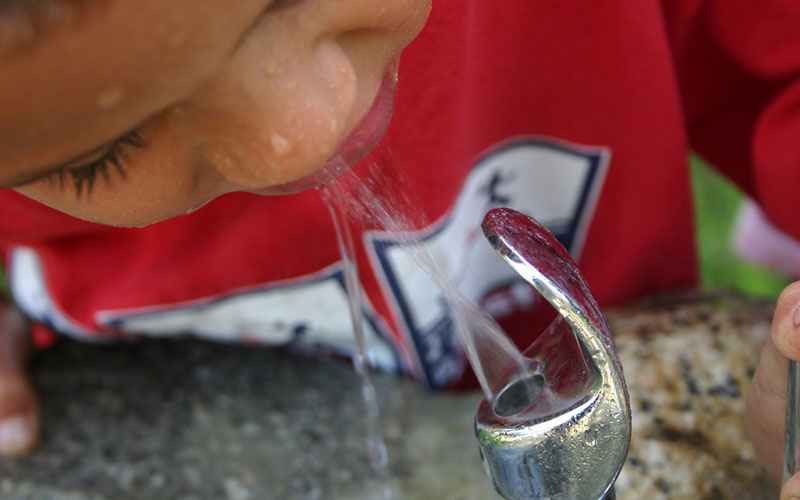
Is the drinking water safe at your town's school? Check New Hampshire's test results to find out. Photo: Jeff Turner (CC by 2.0)
Lead is a toxic substance that is particularly dangerous for children. It permanently impacts behavior and cognitive abilities, among other harmful effects. Last year, thanks to work by CLF and passionate advocates throughout the state, Senate Bill 247 required that all New Hampshire schools test their water for lead. This is a major step forward in the protection of young Granite Staters. But children can only be protected if schools actually complete the testing and quickly take steps to eliminate any lead hazards found.
July 1 was the deadline for New Hampshire schools to submit their test results. As of August 29, 85% of schools had reported results to the State. And of the institutions that did report, testing shows that school drinking water is not nearly as safe as it needs to be.
Too Many New Hampshire Schools Show Lead Contamination in Drinking Water
In fact, the test results are alarming, as they show that lead is widespread in places where children gather.
While Senate Bill 247 requires schools to implement remediation efforts if lead levels exceed the federal standard of 15 parts per billion or .015 microgram per liter. However, that standard is not health-based. In other words, it does not take into account the well-accepted science that any exposure to lead is harmful to children. The American Academy of Pediatrics (AAP) has determined that schools should take immediate action to ensure safe water if they find lead exceeding 1 part per billion (or .001 microgram per liter).
Based on that stricter level, too many New Hampshire schools are failing to keep our children safe. The recent test results show a majority of reporting schools found lead levels above 1 part per billion in one or more location, with a number of them finding lead levels more than 15 times higher than AAP’s recommendation – even exceeding the federal standard (which, again, is not health-based).
You Can Help
Combatting childhood lead poisoning requires all hands on deck. Here’s how you can help protect our children from being exposed to our schools:
- Click here to view the testing results assembled by the State as of August 29 and locate your child’s or your town’s school. Scroll over to the highlighted “Results” column.
- If your school shows results above .001 microgram per liter from any source (unsafe levels are shown in red text), contact your school officials and demand that they take action. Remind them: no level of lead is safe!
- If your local school is not listed, it may not have performed the required tests. Contact your school and urge them to follow the law and protect our children by testing all drinking water immediately.
More than 258,000 children attend New Hampshire’s schools every school day during the academic year. Many are unaware of the dangers hidden in school water – in water fountains and in kitchen faucets used to prepare meals. Because of SB 247 – a law that passed thanks to the support of so many Granite Staters – we have the resources to understand the severity of the situation better. Now it’s our responsibility – as parents and people who care about the future of our children – to take rapid action to protect the next generation.
For more information on childhood lead poisoning in New Hampshire, please visit: http://leadfreekidsnh.org/index.php




